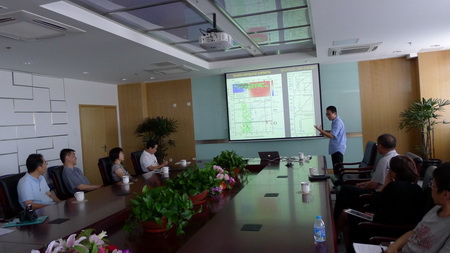Dr. Zhigang Peng, winner of the NSF CAREER Award and Charles Richter Early Career Award by the Seismological Society of America in 2010, was invited by ITP Prof. BAI Ling to conduct academic exchanges at ITP on July 2, 2013. His arrival attracted numerous research staff from ITP as well as the Institute of Geology, China Earthquake Administration.
In his report entitled ‘Improved understanding of earthquake interaction from waveform matching technique’, Dr. Peng shared with the audience his study of the two cutting-edge topics in seismology: long-period tremor and icequake. According to his introduction,tremor occurs at the deeper part of the Earth near the Moho, which is different from the conventional earthquake, .
He showed tremors currently identified as mainly located along the Pacific plate boundaries and the large strike-slip faults like San Andreas, west coast of U.S., and proposed the activity of these tremors as closely correlated with interior physical features of the deep earth. He also took an example from the remotely triggered icequake in the Arctic glacial area following the 2010 Mw8.8 Chile earthquake, and showed that the occurrence of the icequake coincided with the arrival of the Rayleigh wave. Thus he indicated that the mechanism in triggering icequake was different from that behind the ordinary triggered earthquake. He then suggested that further study of icequake is important to improve our understanding of glacial mobility.

Prof. Peng is associate professor of the School of Earth and Atmospheric Sciences, Georgia Institute of Technology. He has an academic interest in the study of high resolution imaging of fault zone structures, temporal changes of earth’s properties, earthquake source properties, spatio-temporal seismicity patterns, earthquake triggering, non-volcanic tremor and slow earthquakes, seismological studies of the earth’s interior. He currently also serves as the editor-in-chief of the Seismological Research Letters.

